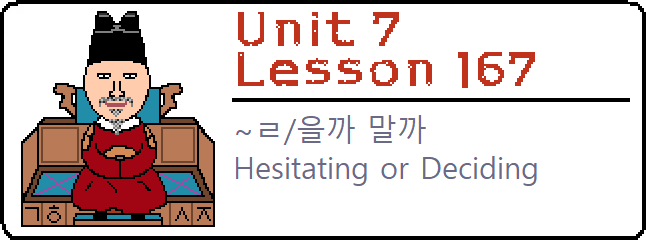 Lesson 167: In this lesson, you will begin a deep-dive into the verb 말다 to see how it can be used in a variety of situations. Specifically, in this lesson, you will learn how ~ㄹ/을까 말까 is used. Lesson 167: In this lesson, you will begin a deep-dive into the verb 말다 to see how it can be used in a variety of situations. Specifically, in this lesson, you will learn how ~ㄹ/을까 말까 is used. |
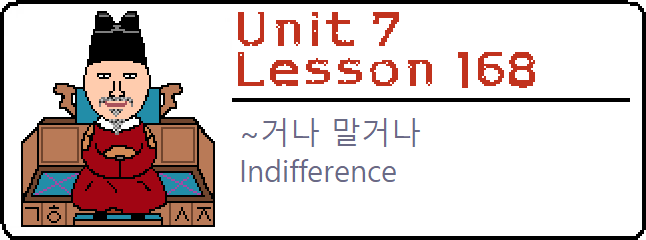 Lesson 168: In this lesson, you will continue to learn about applications of 말다. Specifically, you will see how it can be used with ~거나. Lesson 168: In this lesson, you will continue to learn about applications of 말다. Specifically, you will see how it can be used with ~거나. |
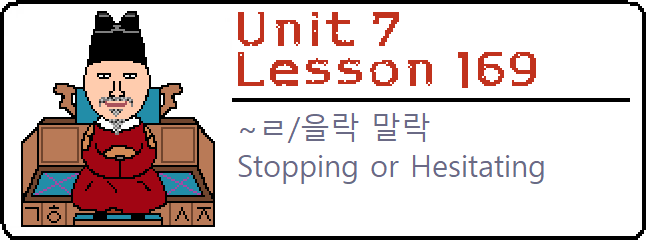 Lesson 169: In this lesson, you will continue to learn about applications of 말다. Specifically, you will see how it can be used with ~ㄹ/을락 말락. Lesson 169: In this lesson, you will continue to learn about applications of 말다. Specifically, you will see how it can be used with ~ㄹ/을락 말락. |
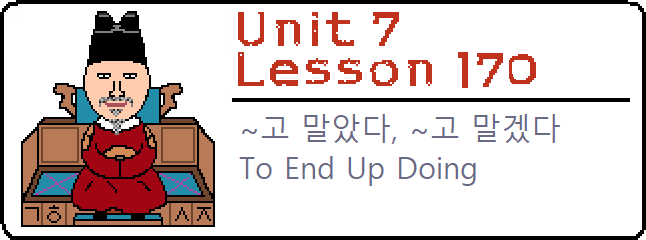 Lesson 170: In this lesson, you will continue to learn about 말. In the past few lessons, you have seen how certain grammatical principles are added to some verbs and also attached to 말다. We will steer away from those style of grammatical principles for this lesson, and focus on how 말다 is used with ~고 and ~고야. Lesson 170: In this lesson, you will continue to learn about 말. In the past few lessons, you have seen how certain grammatical principles are added to some verbs and also attached to 말다. We will steer away from those style of grammatical principles for this lesson, and focus on how 말다 is used with ~고 and ~고야. |
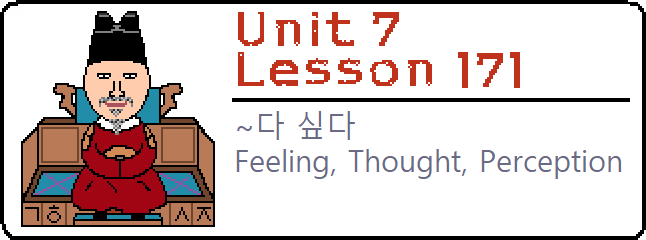 Lesson 171: In this lesson, you will see how 싶다 can be used for more than what was introduced in Lesson 17. You will be introduced to an entirely new purpose of 싶다 and specifically look at how it is used with ~다. Lesson 171: In this lesson, you will see how 싶다 can be used for more than what was introduced in Lesson 17. You will be introduced to an entirely new purpose of 싶다 and specifically look at how it is used with ~다. |
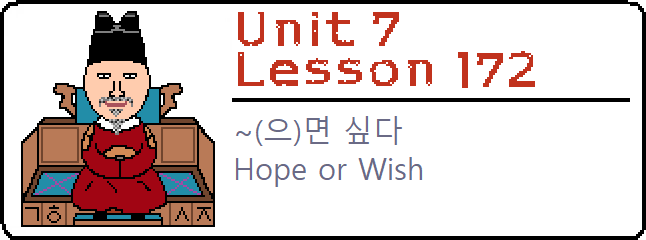 Lesson 172: In this lesson, you will continue to learn about the uses of 싶다, continuing on from the previous lesson. Specifically, you will learn how to use 싶다 after ~(으)면. Lesson 172: In this lesson, you will continue to learn about the uses of 싶다, continuing on from the previous lesson. Specifically, you will learn how to use 싶다 after ~(으)면. |
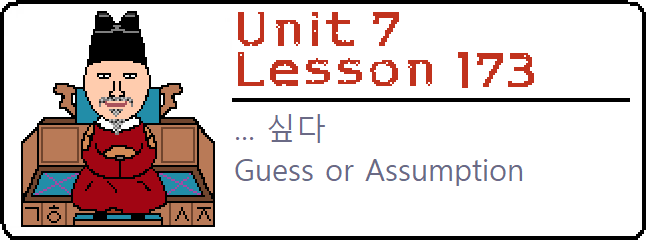 Lesson 173: In this lesson, you will continue to learn about 싶다. In this lesson, you will learn two more uses that follow a similar form after indications of doubt or question. Lesson 173: In this lesson, you will continue to learn about 싶다. In this lesson, you will learn two more uses that follow a similar form after indications of doubt or question. |
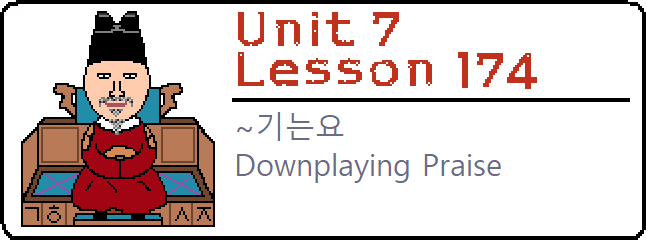 Lesson 174: In this lesson, you will learn a way to make your responses to praise or flattery more humble sounding. Lesson 174: In this lesson, you will learn a way to make your responses to praise or flattery more humble sounding. |
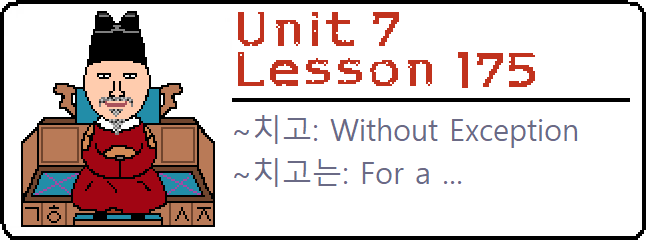 Lesson 175: In this lesson, you will learn how to use ~치고 to indicate that there are no exceptions within a group of things. In addition, you will see how adding ~는 to ~치고 changes the nuance slightly. Lesson 175: In this lesson, you will learn how to use ~치고 to indicate that there are no exceptions within a group of things. In addition, you will see how adding ~는 to ~치고 changes the nuance slightly. |
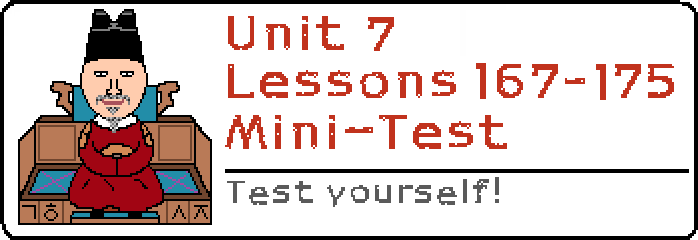 Lessons 167 – 175 Mini-Test: Test yourself on what you learned from Lessons 151 to 158! A Mini-Test like this will be uploaded after every eight lessons. Don’t worry if the test doesn’t go so well – this website is here to help you! Lessons 167 – 175 Mini-Test: Test yourself on what you learned from Lessons 151 to 158! A Mini-Test like this will be uploaded after every eight lessons. Don’t worry if the test doesn’t go so well – this website is here to help you! |

